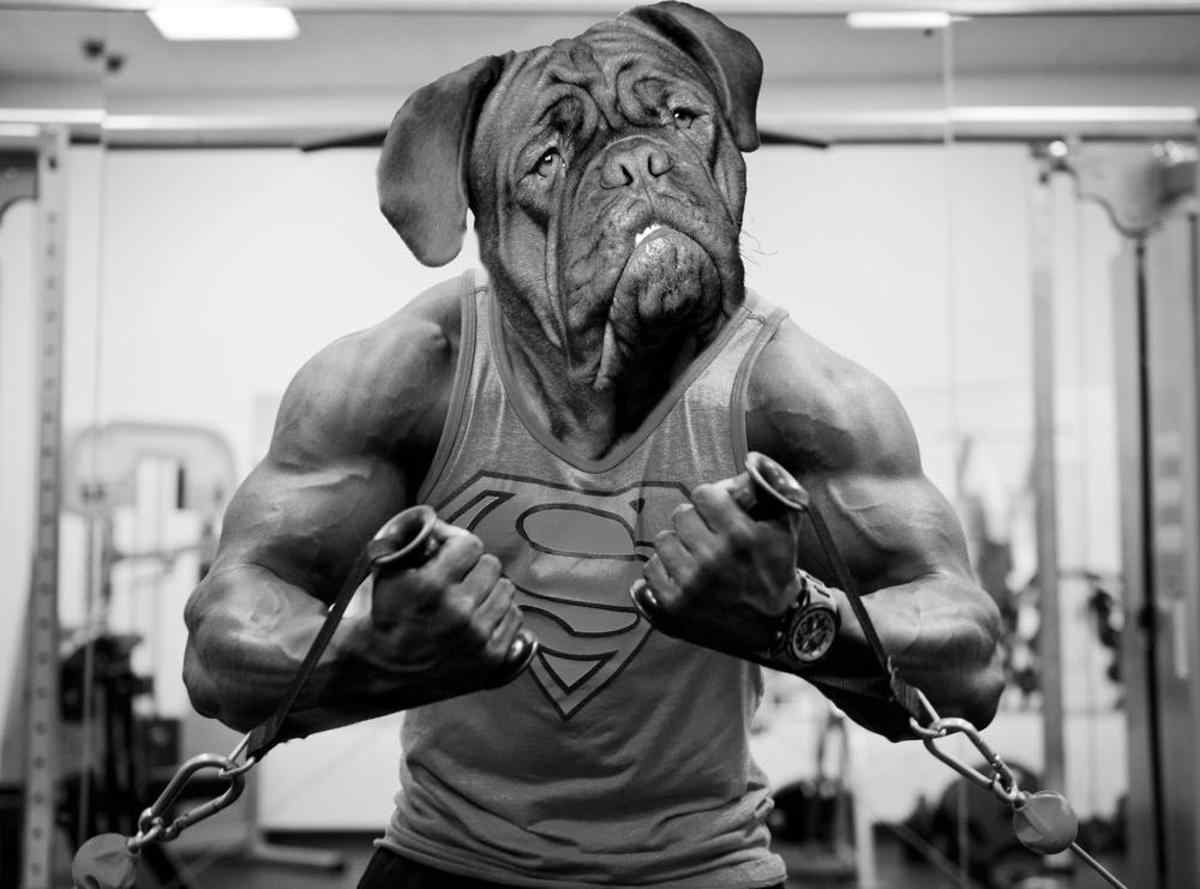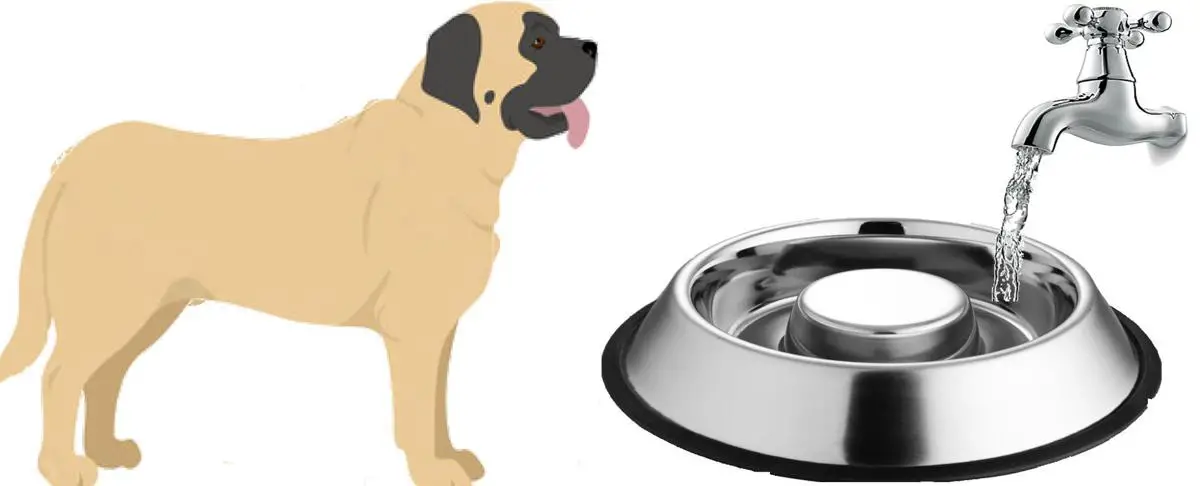Quick Links: Table of Contents
- Mastiff Breed Overview
- History of the Mastiff Breed. Where Mastiffs came from
- What the Mastiff Looks Like
- How Much is the Mastiff Puppy?
- Best Mastiff Breeders
- Adopting or Rescuing the Mastiff
- Mastiff Growth
- What Colors do Mastiffs Have?
- The Temperament of the Mastiff
- How Long Mastiffs Live
- Mastiff Litter Size
- How Fast Mastiffs Can Run
- Good Names for Mastiffs
- How Intelligent are Mastiffs?
- How Popular are Mastiffs with New Dog Owners?
- Health Problems in Mastiffs and How to Prevent Them
- How to Take Care of Mastiff
- Dog Breeds That Are Similar to Mastiffs
- Other Things to Know About Mastiffs
Mastiff Breed Overview
The Mastiff is a giant-sized dog.
The adult Mastiff stands 27 to 32 inches tall at the shoulder.
The Mastiff belongs to the Working Dogs group.
Dogs in the Working Dogs group, like the Mastiff, were developed to assist humans in some capacity – including pulling sleds and carts, guarding flocks, guarding homes, and protecting their families.
Breeds in the Working Group are known for their imposing stature, strength, intelligence, and fearless.
Because of their size and strength, working dogs require a structured home life and firm, fair, consistent training by someone who can provide leadership without resorting to anger or physical force.
The fact that the Mastiff belongs to the Working Dogs group is one of the reasons why Mastiffs have the personality and temperament that they have.
The temperament of the Mastiff is generally described as:
- Affectionate
- Calm
- Courageous
- Dignified
- Good-natured
- Protective
History of the Mastiff Breed. Where Mastiffs came from
This selfless canine is a giant among dogs.
This colossus, the largest of the dog breeds, is a descendant of the Molosser family and was most likely brought to the British Isles aboard Phoenician trading ships between 2000 and 1500 BC.
The progenitor of the modern-day Mastiff was raised and bred as a fearsome guardian for the tribes living in the Isles over centuries and isolated on an island.
By the time the Romans invaded in 55 BC, these courageous canines were being used as war dogs in the resistance against Rome.
Julius Caesar was so impressed with the dog`s size and bravery that he brought a pack back to Rome to fight lions and gladiators.
The Mastiff`s role as a protector and guardian remained unchanged over the centuries.
.
What the Mastiff Looks Like
The Mastiff has a large and powerful body.
They are the largest of all dog breeds in terms of weight rather than height.
The largest Mastiff was 8`3 feet long and weighed 343 pounds.
This breed has a strong build and a large head.
The eyes are dark and spaced widely apart.
Ears are small in relation to the head, V-shaped, and moderately spaced.
The top of the head is broad and flat between the ears, rounded at the brow, and wrinkled.
This dog`s muzzle is short and dark in comparison to the rest of the head.
The nose is broad and dark, with flat nostrils that are well-defined.
The lips are very loose and droop.
.
How Much is the Mastiff Puppy?

The average price of a Mastiff puppy is $1740. The price of a Mastiff puppy ranges from $1100 to $2200.
A lot of factors determine the price of the Mastiff. These factors include what health records the Mastiff puppy has, the lineage of the Mastiff puppy, the US state the breeder is located in, etc.
To estimate how much you can expect to pay for a puppy Mastiff based on the many factors that determine the price of the Mastiff puppy, check out our calculator that lets you estimate how much you should expect to pay for the Mastiff puppy based on what you want in the puppy.
When looking to buy a puppy, look at buying a puppy only from well-established breeders that breed puppies primarily for the love of the Mastiff breed, and secondarily for profit. Do not buy a puppy from a puppy mill. Puppy mills mass-produce puppies in bad living conditions for maximum profit.
You may also consider adopting instead of buying a puppy. Adoption costs are very low compared to the price of a puppy.
Best Mastiff Breeders
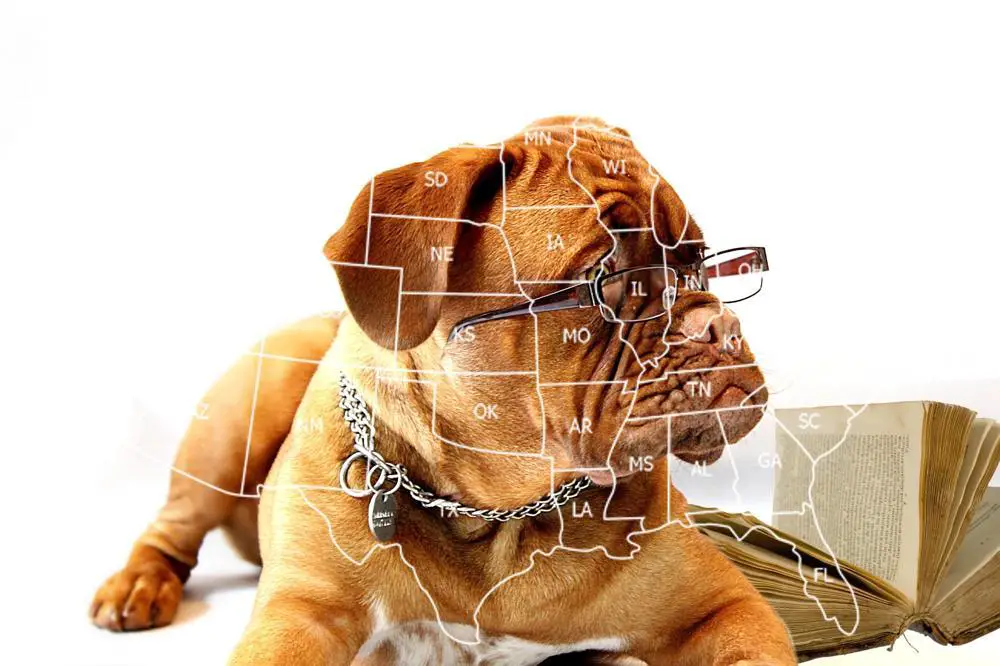
We have researched reputable Mastiff breeders that you can buy a puppy.
Go to this page for our complete list of reputable Mastiff breeders in various states in the United States.
On this page, you will see how much these breeders sell their puppies for, and how many puppies they have available.
A few of these breeders are listed below.
Hawk & Steves Mastiffs
Puppy Price: $1800
Mastiff Meadow of Ohio
Puppy Price: Check with breeder
KAREN WALLACE
Puppy Price: $1500
Wilmer Martin375
Puppy Price: $2100-$3500
Stone Mountain Mastiffs
Puppy Price: $850.00
Adopting or Rescuing the Mastiff
You may consider adopting a dog instead of buying a puppy. Many dogs, Mastiffs included, are currently available for adoption in your local dog shelters.
These helpless but adorable dogs are waiting in dog shelters hoping that someday someone will rescue them. Dog adoption costs are lesser than the cost of a new puppy. Dog adoption costs are usually around $300 or even less.
In addition to your local dog shelter, another good place to find dogs that are available for adoption is petfinder.com.
Below is an adorable Male Mastiff named Samuel that is currently available for adoption on Petfinder.com. You can find other lovely Mastiffs like Samuel on pefinder.com.
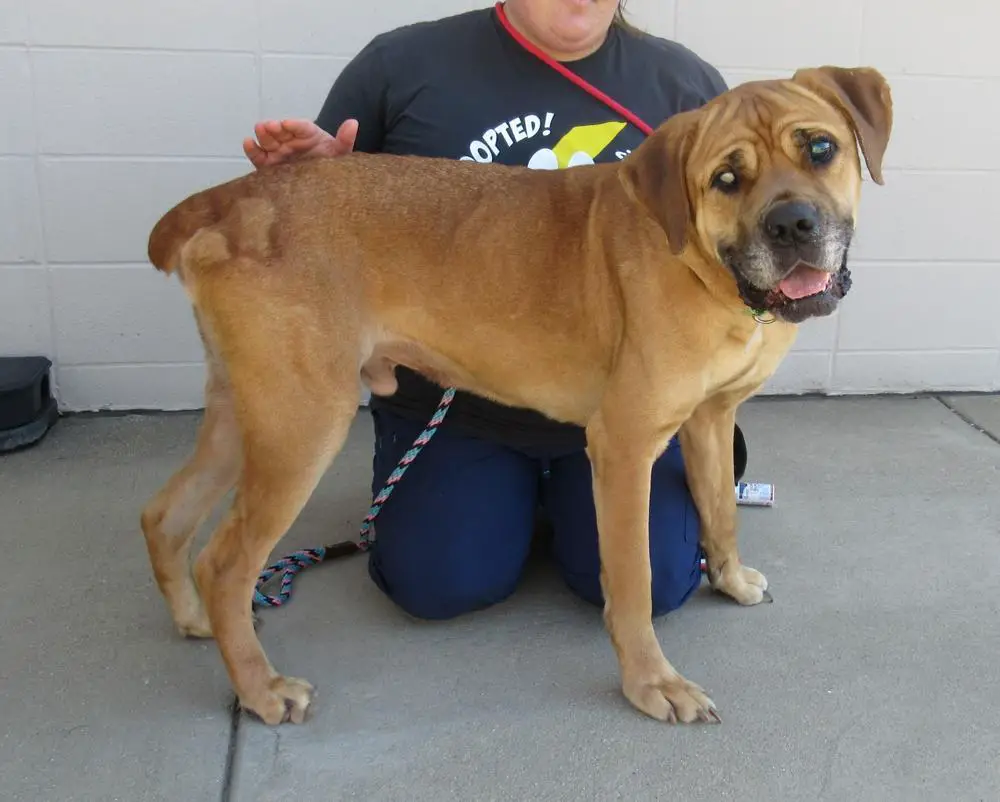
You can find more Mastiffs that are available for adoption on petfinder.
Mastiff Growth
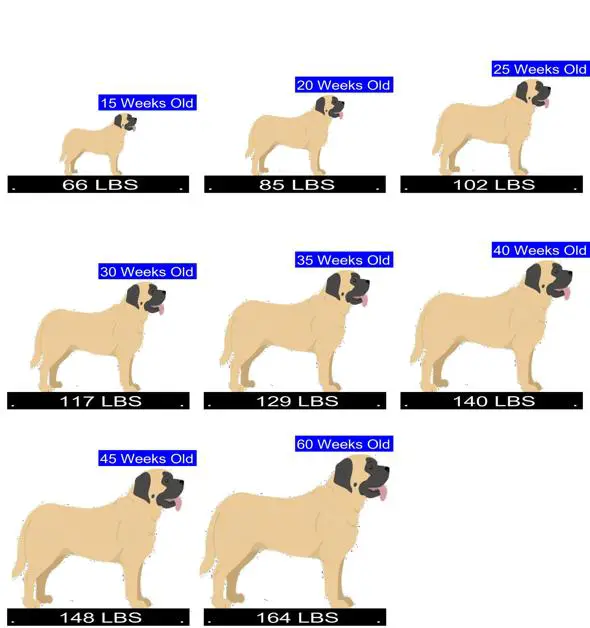
New Mastiff owners need to know about the growth of their Mastiffs. This will help them plan their living spaces accordingly.
Also, knowing the typical growth pattern of the Mastiff will help new owners catch the abnormal growth of their Mastiff early.
See our calculator for predicting how big your Mastiff puppy will get. You will also learn about the typical weight of the Mastiff at different ages and how to catch abnormal growth in your Mastiff
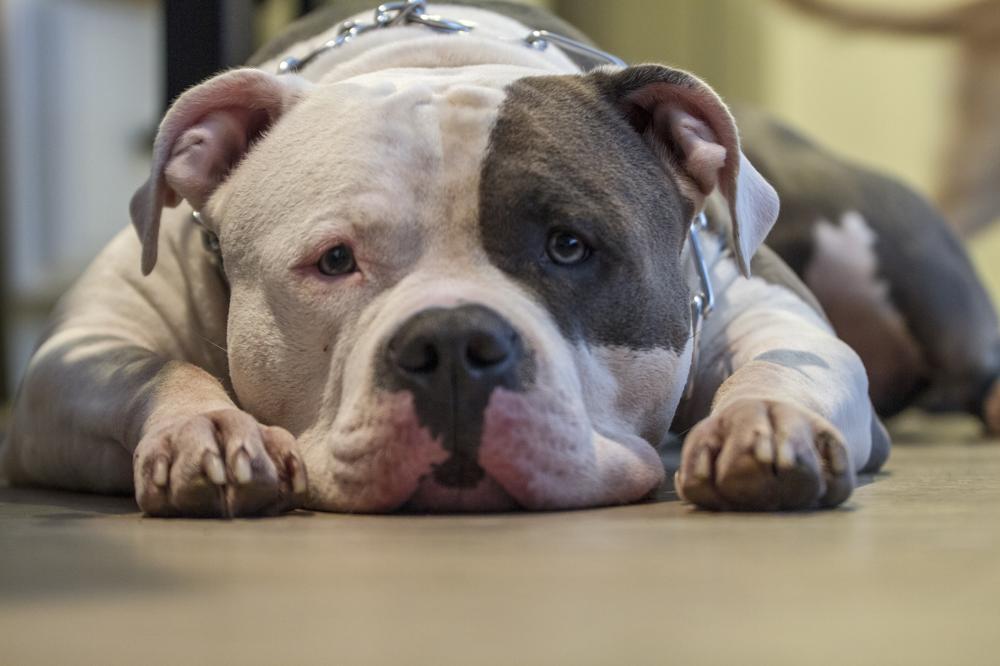
What Colors do Mastiffs Have?
Mastiffs come in the following beautiful primary colors:
- Yellow / Tan / Blond / Fawn
- Apricot / Beige
- Brindle
- Brown / Chocolate
- Black
- Bicolor
- White / Cream
- Golden
- Gray / Blue / Silver
Mastiffs come in the following lovely secondary colors in addition to their primary colors:
- Black
- White / Cream
- Red / Chestnut / Orange
- Brown / Chocolate
- Yellow / Tan / Blond / Fawn
- Bicolor
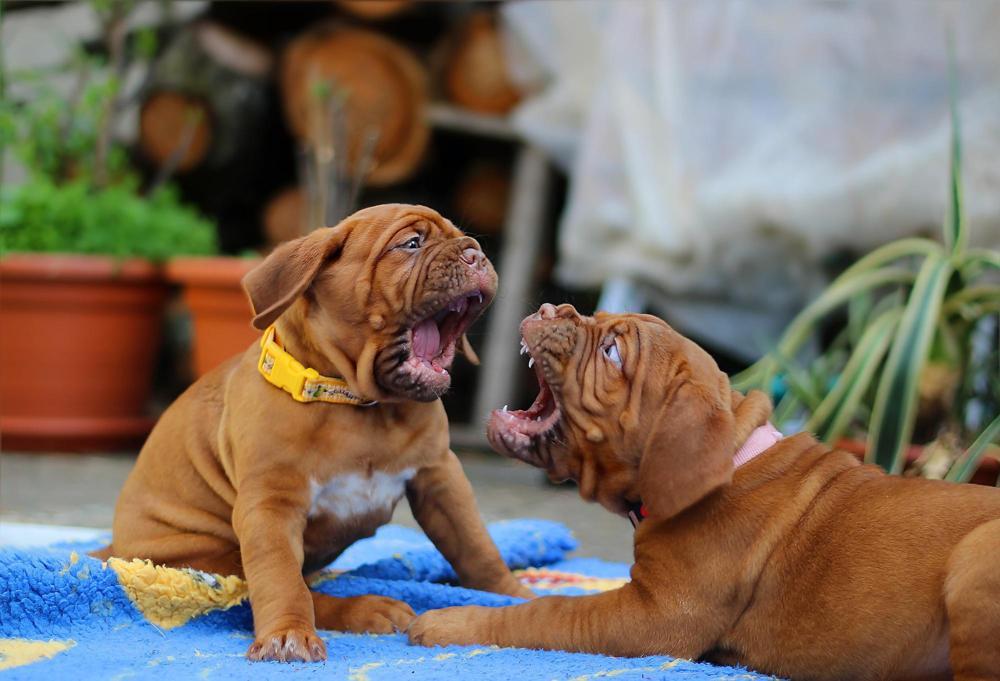
The Temperament of the Mastiff
The temperament of the Mastiff based can be summarized as in the table below.
The table shows the scores of the Mastiff for 13 important dog behavioral factors.
We obtained these scores by analyzing raw data from the C-BARQ dog personality survey tool. The higher the score of a dog for a factor, the worse the temperament of the dog regarding that factor.
The C-BARQ tool was developed by researchers from the University of Pennsylvania, and it is a scientific tool that is used worldwide for reliably measuring the temperament of dog breeds.
See our complete analysis of the temperament of the Mastiff here.
| Factor | Score |
|---|---|
| Attachment Attention Seeking | 60.9 percent |
| Owner Directed Aggression | 5.6 percent |
| Stranger Directed Fear | 42.1 percent |
| Nonsocial Fear | 39.7 percent |
| Stranger Directed Aggression | 33.1 percent |
| Stubbornness | 31.4 percent |
| Dog Directed Aggression | 29.9 percent |
| Energy Level | 29.0 percent |
| Excitability | 28.9 percent |
| Separation Related Behavior | 28.6 percent |
| Dog Directed Fear | 26.3 percent |
| Dog Rivalry | 24.9 percent |
| Touch Sensitivity | 19.1 percent |
| Prey Drive | 18.2 percent |
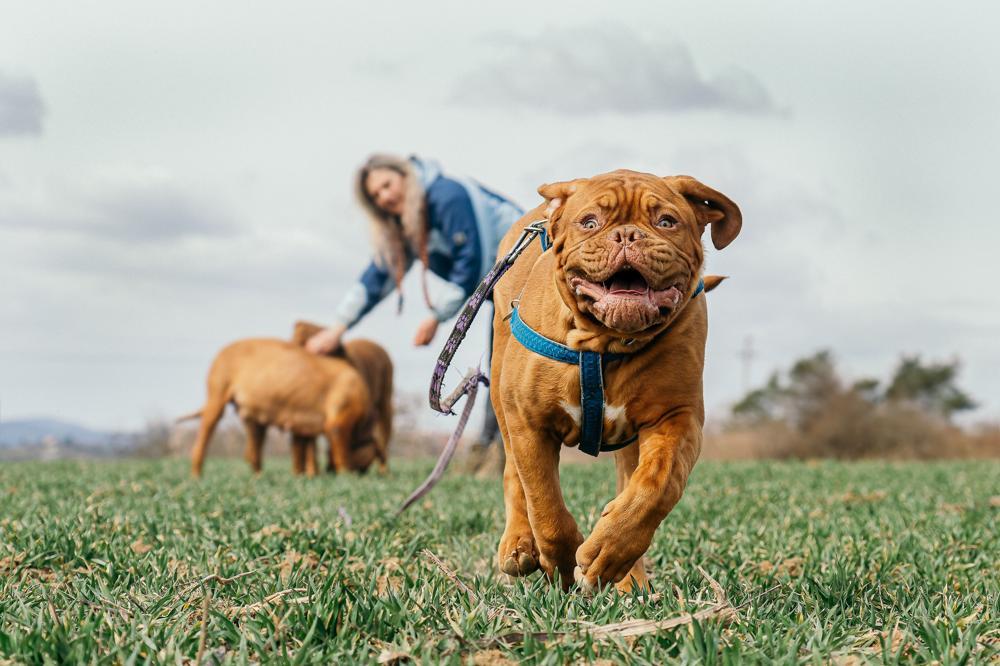
How Long Mastiffs Live
The lifespan of the Mastiff is typically from 6 to 10 years.
Moreover, a few years back, veterinarian researchers performed a scientific study to determine the lifespan of the Mastiff. In this study, the scientists collected data on how long 80 pet Mastiffs lived.
From the study, it was found that Mastiffs have an average lifespan of 6.83 years. Furthermore, the study found that it is not uncommon for Mastiffs to live as long as 16.3 years.
Note that you need to put in some effort if you want your Mastiff to live long.
Mastiffs live long if they eat well, drink well, exercise well, and visit the veterinarian regularly.
There are also dog supplements that you can give your Mastiff to improve your Mastiff`s quality of their life.
Click here to learn more about how to make your Mastiff live long.

Mastiff Litter Size
Researchers from the Norwegian School of Veterinary Science did a study where they counted the numbers of puppies in 7 different Mastiff birth litters.
From this study, the researchers found that the average number of puppies that Mastiffs can have is 6 puppies. Also, the Mastiff can have as few as 4 puppies per litter and as many as 10 puppies per litter.
The number of puppies that the Mastiff will have depends on factors such as the age of the Mastiff, the method of pregnancy, etc.
Click here to see our calculator for predicting how many puppies your Mastiff will have and how the litter size of the Mastiff compares to the litter size of other dog breeds.
How Fast Mastiffs Can Run
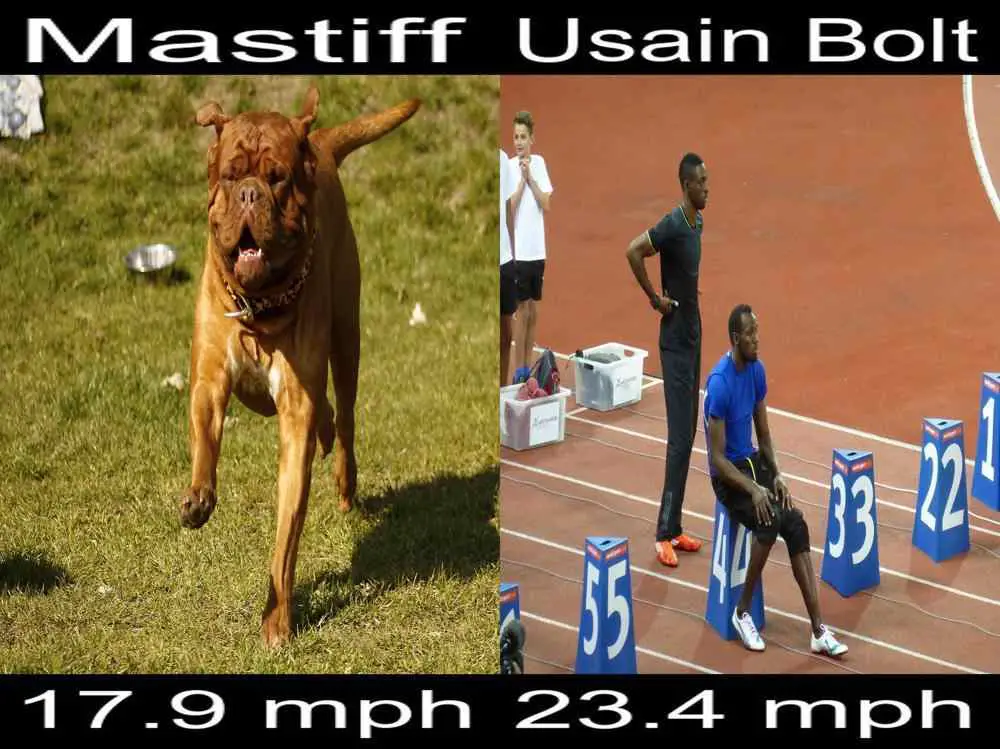
How fast a dog breed can run is a good measure of how athletic the dog breed is.
The American Kennel Club (AKC) regularly conducts dog running competitions. The AKC records the running speed of competing dogs in these competitions. These competitions are open to all dog breeds.
Based on our analysis of the speeds of 33 different Mastiffs, the average speed of the Mastiff is 17.9 mph (28.8 kmph).
The fastest speed on AKC record that the Mastiff ran in a race is 24.33 mph (39.2 kmph) and the minimum speed on record in a race for a Mastiff is 4.51 mph (7.3 kmph).
Click here to see how the speed of the Mastiff compares to the speed of other dogs and other mammals such as cats, horses, humans, etc.
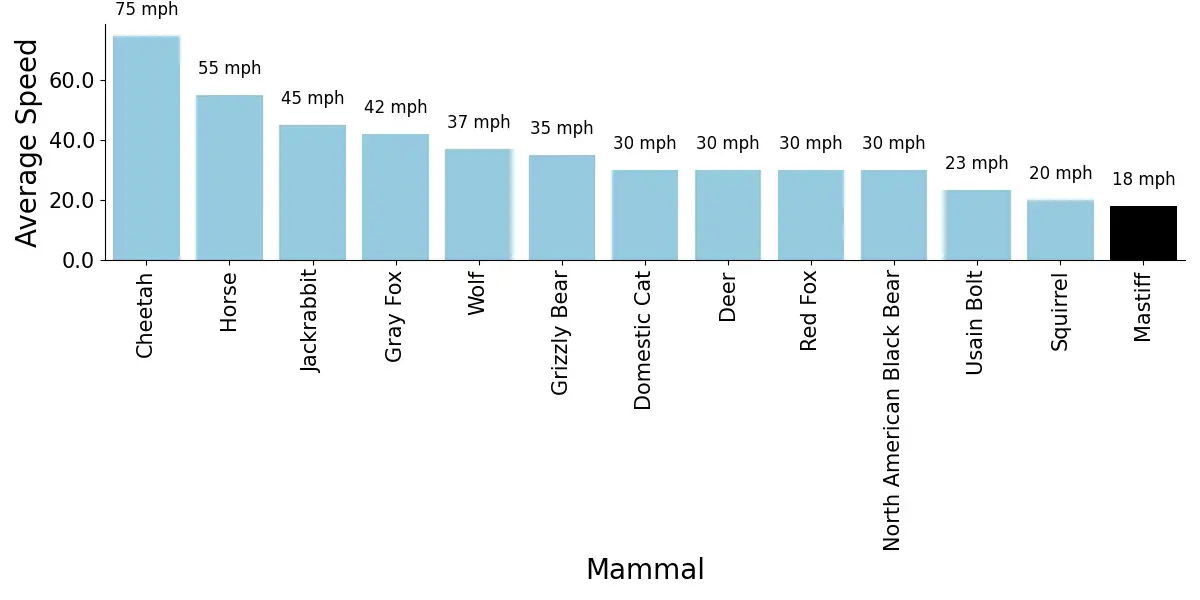
Good Names for Mastiffs
Here are some really good names that are typical for the Mastiff ranked by popularity:
- Romo
- Bubba
- Cosby
- Dog
- Bear
- Major
- Levi
- Toby
- Hawk
- Max
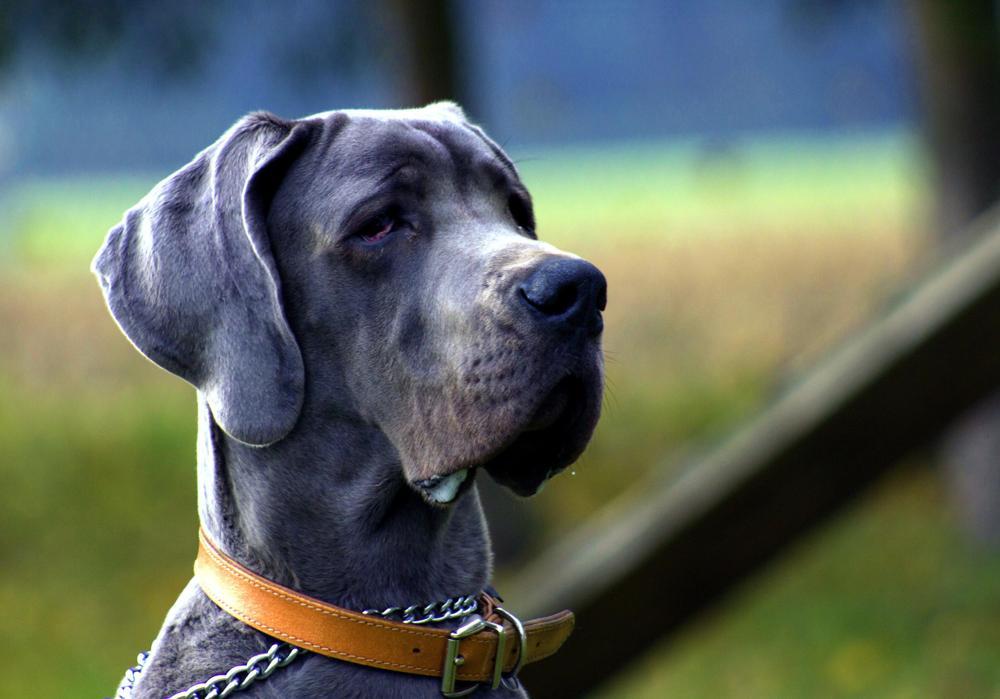
How Intelligent are Mastiffs?
| Mastiff | |
|---|---|
| Intelligence Rank | 72 out of 130 dog breeds |
| Trainability | Tend To Learn New Commands After 80 To 100 Repetitions Or More! |
According to Prof. Stanley Coren, a Canadian psychology professor/dog trainer, the total intelligence that a dog demonstrates is the addition of three types of intelligence. These intelligence types are:
- Instinctive Intelligence: This is the natural intelligence that comes from instinct. For example, dog breeds that have been historically bred to be guard dogs will have a high `guarding` intelligence compared to dogs that were not bred for guarding.
- Adaptive Intelligence (learning and problem-solving ability): This indicates what a dog can learn to do for himself or herself. Adaptive intelligence is specific to each dog, and not breed specific. You can improve your dog`s adaptive intelligence by investing time to train your dog.
- Working/Obedience Intelligence: This type of intelligence is breed-specific. Certain dog breeds tend to have higher working/obedience intelligence than some other breeds. This intelligence is the closest to what we might call school-learning ability and it is based upon what the dog can learn to do when instructed by humans. This type of intelligence can be measured for each dog breed and compared to that of other dog breeds.
Professor Stanley Coren measured and ranked the working intelligence of about 130 different dog breeds.
Prof. Coren found that the Mastiff has an obedience intelligence rank of 72 out of 130 dog breeds. Thus, Prof. Coren put Mastiffs in the `Lowest Degree of Working/Obedience Intelligence Dogs` category.
This means that Mastiffs tend to learn new commands after 80 to 100 repetitions or more!.
However, we should mention that a dog should not be judged based on its intelligence alone. There are other important factors you need to consider when deciding on which dog breed to get. These other factors include sociability, adorability, and compatibility of the dog breed with your lifestyle.
See the intelligence ranking of some other dog breeds below:
| Breed | Intelligence Rank |
|---|---|
| Border Collie | 1 |
| English Springer Spaniel | 13 |
| Belgian Tervuren | 14 |
| English Cocker Spaniel | 18 |
| Vizsla | 25 |
| Airedale Terrier | 29 |
| Manchester Terrier | 32 |
| Cairn Terrier | 35 |
| Affenpinscher | 37 |
| Dalmatian | 39 |
| Kuvasz | 42 |
| American Foxhound | 46 |
| Alaskan Malamute | 50 |
| Chinese Shar-Pei | 51 |
| Akita | 54 |
| Skye Terrier | 55 |
| Italian Greyhound | 60 |
| Shih Tzu | 70 |
| Basset Hound | 71 |
| Pekingese | 73 |
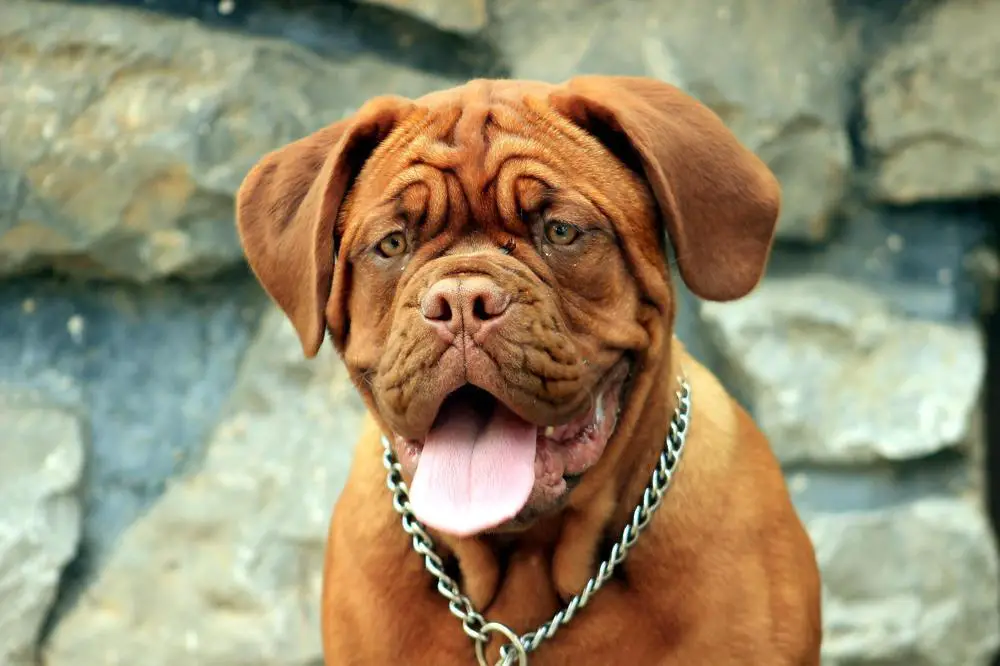
How Popular are Mastiffs with New Dog Owners?
Every year, the American Kennel Club (AKC) publishes information on how popular a dog breed is in that particular year. The AKC gets the popularity information of a breed from how many dogs of that breed the owners register with the AKC every year. The AKC collects this data for about 200 dog breeds.
The graph below shows the popularity trend of the Mastiff.
The popularity of the Mastiff averaged over the years is Number 29 out of about 200 dog breeds.
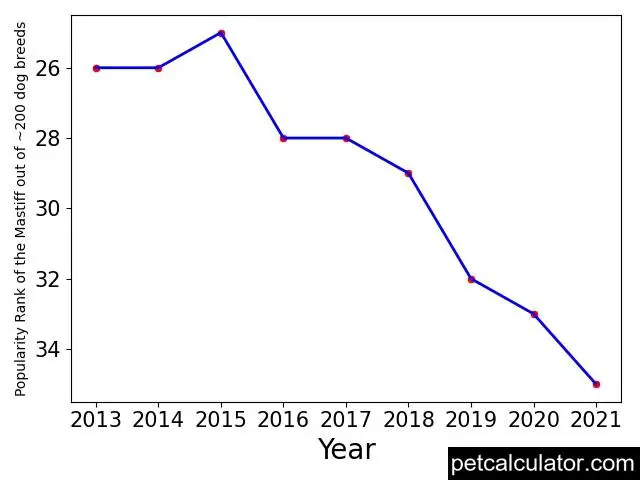
Do not get a dog breed just because it is a popular dog breed. And do not reject a dog breed just because it is an unpopular breed.
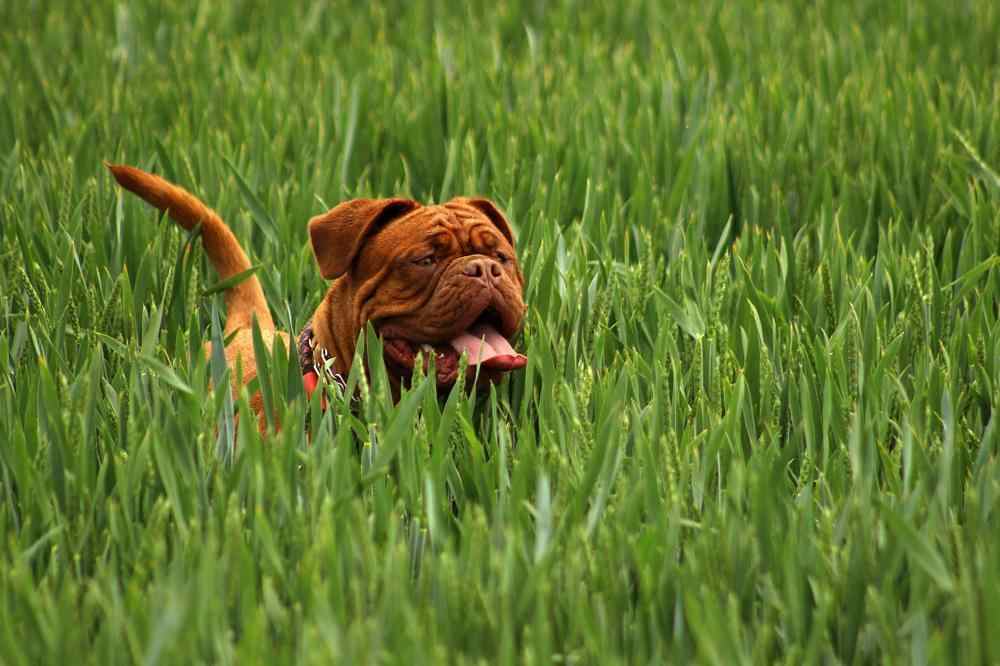
Health Problems in Mastiffs and How to Prevent Them
Every dog breed has its own set of health problems that it tends to develop. There is nothing like a perfect dog breed.
The Mastiff is prone to certain genetic health conditions. The Orthopedic Foundation for Animals (OFA) is an organization that keeps track of genetic health problems in dog breeds.
From the extensive records that the OFA keeps, the OFA knows what health problems each dog breed is naturally prone to develop.
Hence, the OFA recommends which health screening breeders should perform on a dog breed to make sure that the breeders won`t breed `defective` dog parents that can pass down defective genes to their puppy offspring.
If you want a Mastiff puppy that will grow up to be healthy, make sure that your Mastiff breeder screens your puppy or your puppy`s parents for the health problems that the OFA recommends for your puppy`s breed. This will increase the chances that your puppy is free from genetic defects.
The following are the health tests that Orthopedic Foundation for Animals (OFA) recommends that breeders should screen Mastiffs for:
- Autoimmune thyroiditis
- Cardiac Evaluation
- Cystinuria
- Elbow Dysplasia
- Eye Examination- Minimum age 24 months
- Hip Dysplasia
- PennGen
You can find out more about OFA`s recommended tests for Mastiffs here.
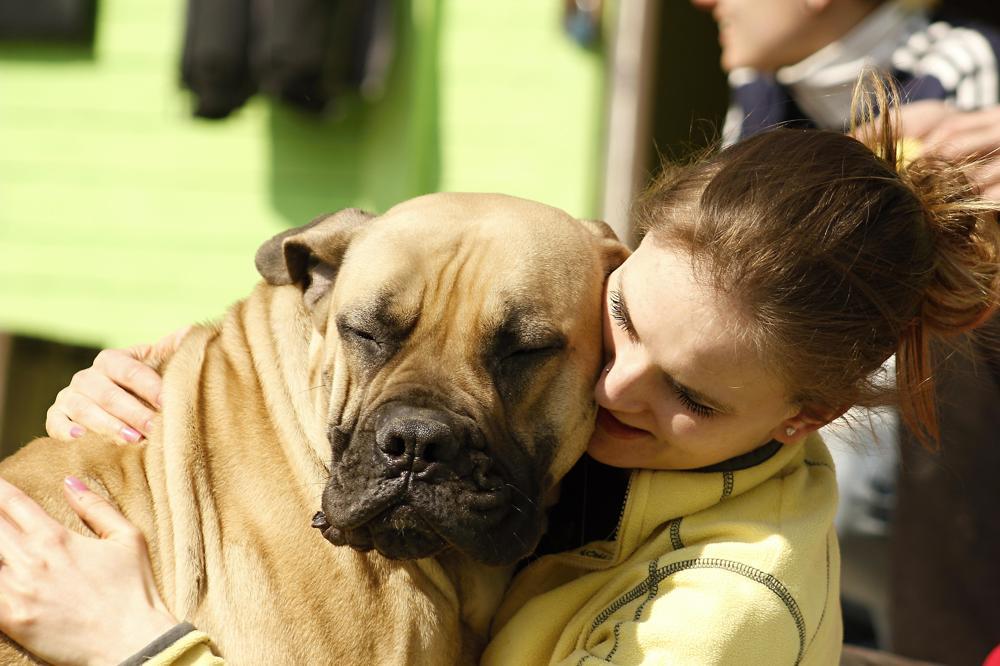
How to Take Care of Mastiff
To take good care of your Mastiff, you need to make sure that you groom your Mastiff regularly.
Secondly, you need to find a veterinarian in your area that will routinely check the health status of your Mastiff regularly, and give you appropriate recommendations on your Mastiff`s preventative care.
Thirdly, you need to commit some time to exercise your Mastiff daily. Regular exercise helps improve the health and quality of life of your Mastiff.
Also, you need to feed your Mastiff high-quality dog food, and the food should be of the right amount to prevent your Mastiff from getting overweight or underweight.
See our recommendations on what to feed the Mastiff and how much food to feed the Mastiff at different life stages.
Finally, you need to make sure that your Mastiff has access to clean water all the time. See our recommendations on how much water your Mastiff needs to drink at different ages.
Dog Breeds That Are Similar to Mastiffs
If you have not made up your mind on which dog breed to get, you may also want to consider some other dogs similar to the Mastiff.
We crunched the numbers and found that the following dog breeds that have similar behavior and temperament as the Mastiff:
- Black Russian Terrier (73 percent match with Mastiff). Learn more about the Black Russian Terrier here.
- Caucasian Shepherd Dog (72 percent match with Mastiff). Learn more about the Caucasian Shepherd Dog here.
- Dogue de Bordeaux (72 percent match with Mastiff). Learn more about the Dogue de Bordeaux here.
- Leonberger (73 percent match with Mastiff). Learn more about the Leonberger here.
- Neapolitan Mastiff (72 percent match with Mastiff). Learn more about the Neapolitan Mastiff here.

Other Things to Know About Mastiffs
Here are some of the very important characteristics of the Mastiff that you need to know about the Mastiff breed:
